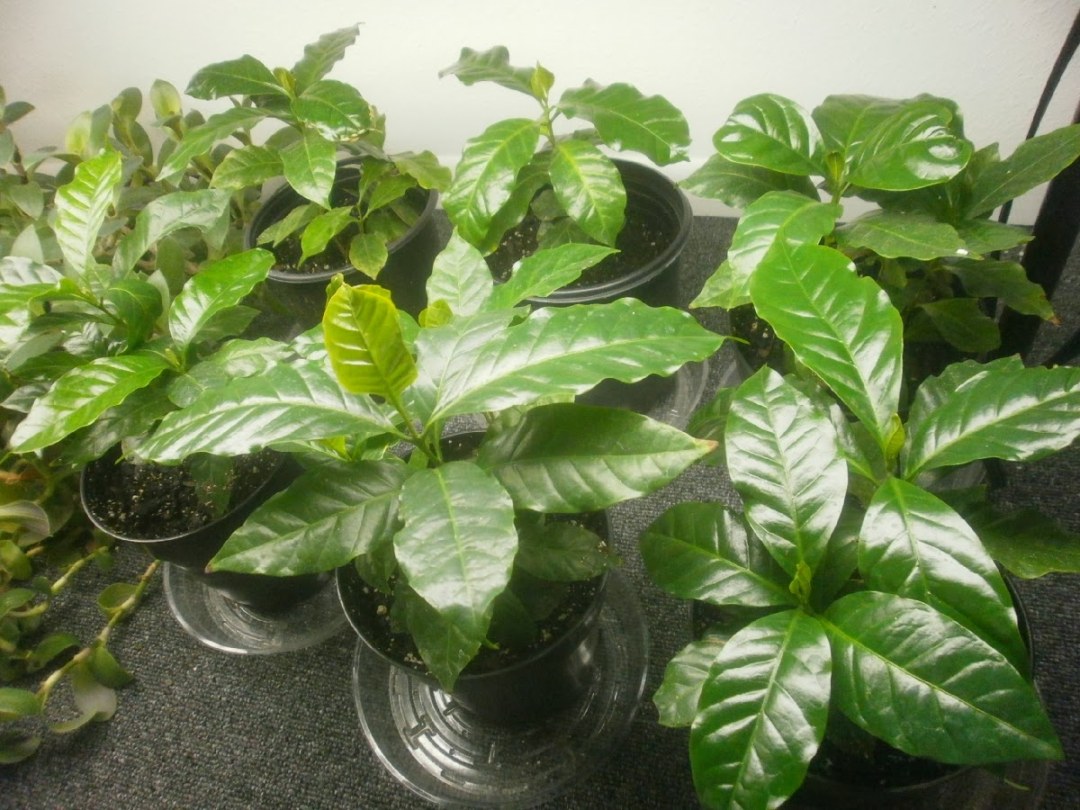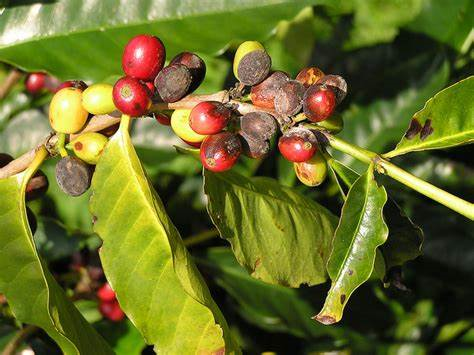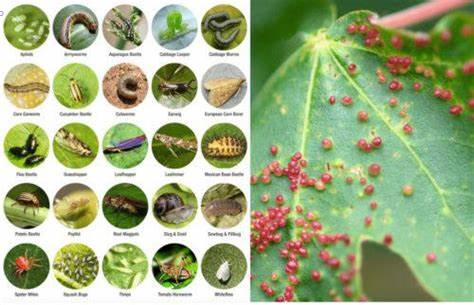Grow Your Own Coffee at Home to Discover the Remarkable Flavours!
If you’re someone who loves both coffee and gardening, why not bring those two passions together and try growing your own coffee at home? Cultivating coffee plants indoors can be a fun and rewarding journey, plus there’s nothing quite like the satisfaction of brewing a cup of coffee from beans you’ve grown yourself. In this blog post, we’ll dive into the best coffee varieties for home cultivation, share tips for growing them indoors, and give you a sneak peek into the timeline for harvesting your very first batch of homegrown coffee beans.

Varieties of Coffee for Home Cultivation:
When it comes to growing coffee at home, there are two main species of coffee plants you’ll want to consider: Coffea arabica (Arabica) and Coffea canephora (Robusta). Arabica coffee is renowned for its complex and nuanced flavors, making it the go-to choice for most coffee lovers, while Robusta is valued for its higher caffeine content and resilience against diseases. Both species can be successfully grown indoors, but Arabica is generally the preferred option due to its superior taste profile.
Popular Coffee Varieties to Grow at Home:
Arabica Varieties:
- Typica: A classic with a smooth, balanced flavor and mild acidity.
- Bourbon: Known for its sweet, complex flavor notes.
- Caturra: A compact variety of Bourbon, perfect for indoor growth.
- Geisha (Gesha): Famous for its exceptional, floral, and fruity flavors.
- SL28 and SL34: Kenyan varieties celebrated for their vibrant acidity and bright taste.
Robusta Varieties:
- Robusta: Known for its bold, full-bodied flavor and high caffeine content.
- Nganda: A robust Ugandan variety with excellent disease resistance.
- S274 (CXR): A higher-quality Robusta strain that produces superior beans compared to traditional varieties.
Do You Need Special Tools to Grow Coffee at Home?
Growing coffee at home doesn’t require a long list of specialized tools, but having a few key items can make the process smoother and more enjoyable. Here’s a rundown of the essentials you’ll need to start your indoor coffee garden:
- Pots and Containers: Choose spacious pots with good drainage. Start with a small container and repot as your plant grows to give its roots room to expand.
- Potting Mix: A well-draining soil mix is crucial. Combine potting soil, peat moss, and perlite for the perfect blend.
- Watering Can or Spray Bottle: Coffee plants love consistent moisture, so a watering can or spray bottle for misting will help keep humidity levels in check.
- Grow Lights: If natural sunlight is limited, full-spectrum grow lights will provide the necessary light energy for healthy growth.
- Pruning Shears: Regular pruning encourages new growth and helps shape the plant. Keep a pair of pruning shears handy to trim away any dead or unwanted stems.
- Humidity Tray or Humidifier: Coffee plants thrive in humid environments. Use a humidity tray or small humidifier to keep the air moist.
- Fertilizer: A balanced liquid fertilizer, diluted to half strength, will keep your plant nourished. Feed it every 6-8 weeks during the growing season.
- Thermometer and Hygrometer: Monitoring temperature and humidity is key to creating the ideal conditions for your coffee plant.
- pH Tester: Coffee plants prefer slightly acidic soil, so a pH tester can help you ensure your soil stays in the ideal range of around 6.
- Support Stakes: As your coffee plant grows taller, stakes can help keep it upright and prevent it from toppling over.
- Trellis or Climbing Support: If you’re growing a climbing variety like Geisha, a trellis will help it grow vertically.
- Mulch (Optional): A layer of mulch can help retain moisture and regulate the temperature of the soil.

While these tools can certainly make your coffee-growing experience more enjoyable, the most important elements are providing the right conditions: adequate light, proper humidity, consistent watering, and a suitable soil mix.
De’Longhi Electric Coffee Grinder – Amazon.com
Travel Coffee Mug Spill Proof, Coffee Mug – Amazon.com
Evanda Coffee Mugs Set of 6 – Amazon.com
Lavazza, Qualità Rossa, 1 Kg, Ground Coffee -s Amazon.com
Can You Grow Coffee Indoors?
Absolutely! Growing coffee indoors is a fun and rewarding challenge. Here’s how to get started:
Choosing the Right Container:
Pick a spacious container with good drainage. Coffee plants have extensive root systems, so a larger pot will allow your plant to grow comfortably.
Soil:
Use a well-draining soil mix. A combination of potting soil, peat moss, and perlite provides the ideal environment for your coffee plant’s roots.
Light:
Coffee plants thrive in bright, indirect light. Place them near a window that gets filtered sunlight or consider investing in artificial grow lights.
Temperature and Humidity:
Coffee plants do best in moderate temperatures (60-70°F or 15-24°C) and high humidity. Misting the leaves regularly helps maintain the necessary moisture in the air.
Watering:
Water your coffee plant regularly, but be careful not to overwater. Keep the soil consistently moist, but allow the top inch to dry out before watering again.
Fertilization:
Feed your coffee plant with a diluted, balanced liquid fertilizer every 6-8 weeks during the growing season (spring and summer).
With patience and the right tools, growing coffee at home can be a rewarding experience that not only satisfies your green thumb but also your coffee cravings!

Time to Harvest: Growing coffee plants from seed to harvest is a patient process. It takes about 3-4 years for a coffee plant to mature and start producing cherries. Here’s a general timeline:
- Year 1: Plant germinates and develops its first few leaves.
- Year 2: The plant grows taller with more leaves. Prune lightly to encourage branching.
- Year 3: The plant continues to grow and may produce its first flowers.
- Year 4: Flowers are pollinated, and cherries begin to develop. Harvest can begin once cherries are ripe.
It’s worth noting that indoor plants may take slightly longer to mature due to reduced light intensity and space constraints.
You can purchase coffee plants from a variety of sources, both online and offline. Here are some options to consider:
- Nurseries and Garden Centers: Local nurseries and garden centres might carry coffee plants, especially those that cater to indoor gardening and exotic plants.
- Online Plant Retailers: Many online plant retailers offer a wide range of plants, including coffee plants. Be sure to read reviews and check the reputation of the seller before making a purchase.
- Specialty Coffee Shops: Some specialty coffee shops, especially those with a focus on sustainability, might sell coffee plants or be able to guide you to local sources.
- Plant Expos and Farmers’ Markets: Look for plant expos, farmers’ markets, or botanical garden events in your area. These can be great places to find unique plants, including coffee plants.
- Online Marketplaces: Online marketplaces like Amazon, eBay, and Etsy often have coffee plants available for purchase. Again, make sure to read reviews and choose a reputable seller.
Is there an Ideal Time to Plant my Coffee Trees?
As for the ideal time to start growing coffee plants at home, it’s generally best to begin in the spring or early summer. This allows your coffee plant to take advantage of the warmer and more favourable growing conditions. Starting in the colder months might slow down growth, and the reduced daylight hours could affect your plant’s development.
Here’s a rough timeline to consider:
- Spring (March to May): This is an optimal time to start. As temperatures rise and daylight hours increase, your coffee plant will have a good growing season ahead.
- Early Summer (June to July): If you missed the spring window, early summer is still suitable for planting coffee. Just make sure to provide your plant with the necessary light and warmth.
Starting during these times gives your coffee plant the opportunity to establish itself and grow during the more active growing season. Remember that coffee plants are slow growers, so be patient and consistent in your care as you watch them develop over the years so you too can grow your own coffee at home successfully.

What Type of Soil should I Use to Grow Your Own Coffee at Home?
Choosing the right soil is one of the most crucial factors in growing healthy coffee plants at home. Coffee plants have specific soil needs to thrive, and getting the soil right is key to encouraging optimal growth and ultimately, a successful harvest of coffee beans. Here’s your guide to selecting and preparing the ideal soil mix for your coffee plants:
1. Well-Draining Soil:
Coffee plants do not like their roots sitting in water, as this can lead to root rot. It’s essential to choose a soil mixture that drains well, allowing excess water to escape while still retaining enough moisture for the roots. A mix that holds onto moisture without becoming soggy is ideal for these plants.
2. Slightly Acidic pH:
Coffee plants thrive in slightly acidic soil with a pH range of 6 to 6.5. This pH range helps ensure that the plants can absorb nutrients effectively. Use a soil testing kit to check your soil’s pH, and if it’s too alkaline, you can lower the pH by adding peat moss or sulfur.
3. Incorporating Organic Matter:
Adding organic material to your soil helps improve its structure, boosts nutrient content, and increases water retention. Compost or well-rotted organic matter is ideal for enriching the soil, providing nutrients, and creating a healthy environment for root development.
4. Essential Soil Components:
Creating the right soil mix for your coffee plant is simple with the right ingredients. Combine the following to achieve the perfect balance of acidity, drainage, and nutrients:
- Peat Moss: Provides the necessary acidity and moisture retention.
- Perlite: Enhances drainage and aeration in the soil, preventing compaction.
- Compost: Adds nutrients and organic matter, helping to nourish the plant.
- Coarse Sand: Improves drainage and prevents the soil from becoming too compacted.
5. Soil Preparation Process:
Here’s how to prepare your soil mix for planting:
- a. Choose a Pot: Opt for a pot with drainage holes to prevent water from accumulating at the bottom. If planting outdoors, ensure the soil has excellent drainage.
- b. Mix the Components: In a container, combine equal parts of peat moss, perlite, compost, and coarse sand. This mixture ensures your coffee plant will have a balanced, well-draining, and nutrient-rich environment.
- c. Fill the Pot: Fill your pot with the prepared soil, leaving a little space at the top to allow for watering.
- d. Transplanting: Gently transfer your coffee plant or seedling into the pot, ensuring the soil level is consistent with its previous container.
6. Mulching:
Apply a layer of organic mulch, such as wood chips or straw, around the base of your coffee plant. This will help maintain soil moisture, reduce weed growth, and regulate soil temperature, creating a more stable environment for the plant.
7. Fertilization:
Though your soil mix will contain some nutrients, coffee plants benefit from periodic fertilization. Use a balanced, water-soluble fertilizer diluted to half strength. Apply the fertilizer every 6-8 weeks during the growing season (spring and summer) to support healthy growth.
8. Watering:
Water your coffee plant when the top inch of the soil feels dry. Avoid overwatering, as it can lead to root rot. A well-draining soil mix will help regulate moisture levels, ensuring your plant gets just the right amount of water.
De’Longhi Stilosa Manual Espresso Coffee Machine – Amazon.com
De’Longhi Nespresso Essenza Mini – Amazon.com
De’Longhi Signature Blend Coffee Beans – Amazon.com
L’OR Espresso Grande Assortment Pack 100 Pods – Amazon.com
How Often Should I Water My Coffee Plant & Do Coffee Plants Need Fertilizers?
Watering Your Coffee Plant:
Consistent and correct watering is key to keeping your coffee plant healthy. While the frequency of watering can depend on factors like climate, humidity, and pot size, here are some helpful tips:
- Check Soil Moisture: Before watering, stick your finger into the soil about an inch deep. If it feels dry, it’s time to water.
- Consistent Moisture: Coffee plants like their soil to stay consistently moist, but not soggy. Maintain damp soil, but avoid waterlogging.
- Avoid Overwatering: Overwatering can lead to root rot. If the soil feels wet or water accumulates in the saucer, hold off on watering until the soil has dried slightly.
- Seasonal Adjustments: During the growing season (spring and summer), your coffee plant may require more frequent watering. During the dormant period (fall and winter), when growth slows, reduce the watering frequency.
- Humidity: Coffee plants thrive in humid environments. If you’re growing your plant indoors, consider using a humidity tray, humidifier, or misting the leaves regularly to maintain adequate moisture in the air.
Fertilizing Your Coffee Plant:
Coffee plants do need occasional fertilization, especially during their active growing period. Here’s everything you need to know about fertilizing your coffee plant:
- Balanced Fertilizer: Choose a balanced, water-soluble fertilizer with an N-P-K ratio of 10-10-10 or 20-20-20.
- Dilution: Dilute the fertilizer to half the strength recommended on the package. Coffee plants are sensitive to overfertilization, which can stress or burn their roots.
- Fertilization Frequency: During the growing season (spring and summer), fertilize your plant every 6-8 weeks. Stop or reduce fertilization in the dormant season.
- Application: Water your plant with the diluted fertilizer solution, making sure to moisten the soil evenly.
- Organic Options: If you prefer organic fertilizers, compost or well-rotted manure can be added to the soil in small amounts to provide nutrients during the growing season.
- Avoid Over-Fertilizing: Too much fertilizer can cause your coffee plant to grow rapidly but weakly, making it more susceptible to pests. Yellowing leaves may indicate overfertilization, so reduce the fertilizer amount if you notice this.
As always, keep a close eye on your coffee plant’s health. Each plant is unique, and regular monitoring of its growth and appearance will help you determine the best watering and fertilization schedule.

Common Pests and Diseases to Watch Out For
Growing coffee at home is an exciting journey, but like any plant, your coffee plant might face some challenges from pests and diseases. Regularly checking your plants and taking proactive steps will help keep them thriving. Here’s a look at some of the most common pests you might encounter:
Common Pests:
- Aphids: These tiny pests suck sap from your plant, leading to distorted growth and yellowing leaves. You can get rid of them with insecticidal soap or by spraying them off with a strong jet of water.
- Mealybugs: Mealybugs are small, white insects that gather in clusters on the leaves and stems, feeding on plant sap. You can remove them by gently wiping them off with a damp cloth, or treat them with neem oil or insecticidal soap.
- Spider Mites: These minuscule pests are notorious for leaving fine webbing on the leaves and causing discoloration or stippling. Increase humidity around the plant and use insecticidal soap or neem oil to manage them.
- Scale Insects: Scale insects look like tiny bumps on the plant’s stems and leaves. They feed on plant juices and can weaken your coffee plant. Manually scrape them off or apply horticultural oil to suffocate them.
- Whiteflies: Small and white, these insects can cause yellowing and a general weakening of your coffee plant. When disturbed, they flutter into the air. Combat them with yellow sticky traps and insecticidal soap to reduce their numbers.
By keeping a close eye on your coffee plant and addressing pest issues promptly, you’ll ensure it remains healthy and strong, ready for that first cup of homegrown coffee!

Common Diseases to Watch For:
- Coffee Leaf Rust: This fungal disease manifests as orange or yellow powdery spots on the leaves, leading to leaf drop and weakened plants. To control its spread, apply fungicides and remove any infected leaves.
- Coffee Berry Disease: This fungal infection targets the coffee berries, causing them to rot and drop prematurely. To prevent the spread, remove infected berries and improve air circulation around your plants.
- Root Rot: Caused by overwatering or poorly drained soil, root rot can cause the plant to wilt and deteriorate. To avoid this, ensure the soil has proper drainage and avoid excessive watering.
- Bacterial Blight: This disease causes brown lesions on the leaves and stems, eventually leading to leaf drop and weakened plants. Prune affected areas and avoid watering from overhead to reduce spread.
Preventative Measures:
- Regular Inspections: Routinely check your coffee plants for any signs of pests or diseases. Early detection allows you to address issues before they spread.
- Isolation: When acquiring new plants, isolate them for a while before introducing them to your other plants. This helps prevent the spread of pests or diseases to your existing plants.
- Maintain Cleanliness: Keep your growing area tidy by removing fallen leaves and plant debris, which can harbor pests and pathogens.
- Ensure Proper Drainage: To prevent root rot, make sure the soil in your pots has good drainage, and avoid overwatering.
- Provide Adequate Spacing: If growing multiple plants, give them enough space to ensure proper air circulation. This reduces the likelihood of disease spread.
- Quarantine New Plants: Isolate any new plants before introducing them to your garden to minimize the risk of pest or disease transmission.
- Encourage Natural Predators: Attract beneficial insects, like ladybugs and lacewings, which can help keep pest populations under control.
- Prune Regularly: Remove dead, diseased, or damaged plant parts to help prevent the spread of disease.
Remember, prevention is always the best defense. By adopting good care practices, monitoring your plants closely, and addressing any issues promptly, you’ll give your coffee plants the best chance for healthy growth and a successful harvest.n maintain healthy coffee plants and reduce the risk of pests and diseases impacting your crop.
Author

Brendon McAliece is a seasoned expat with a diverse background, offering over three decades of experience in flight simulation and PC building, along with more than 20 years of real-world jet fighter expertise as a weapons and egress technician. Holding a sport pilot certificate, Brendon also brings hands-on flying experience to the table.
Having traveled extensively across Europe, the Middle East, Asia, and his native Australia, Brendon has developed a passion for travel, languages, flight simulation, guitar playing, and coffee of course!. You can explore more of his insights and experiences in his blogs below.
Learn more @
DreamingGuitar.com – DreamingCoffee.com – LetsFlyVFR.com
Home – Blog – Shop – About
As an Amazon affiliate I may earn on qualifying sales.


